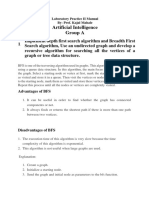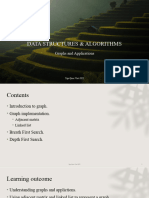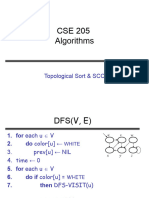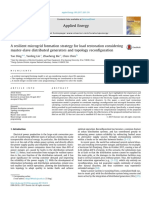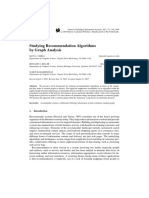0% found this document useful (0 votes)
8 views64 pagesCH 03
The document discusses graph traversal algorithms, specifically Depth First Search (DFS) and Breadth First Search (BFS), detailing their methodologies, complexities, and applications. It includes examples of both algorithms, implementation details, and various applications such as finding connected components, paths between vertices, and identifying cut vertices and bridges. Additionally, it covers strong connectivity in directed graphs and introduces Tarjan's algorithm for finding strongly connected components.
Uploaded by
nguyenducdung1112005Copyright
© © All Rights Reserved
We take content rights seriously. If you suspect this is your content, claim it here.
Available Formats
Download as PDF, TXT or read online on Scribd
0% found this document useful (0 votes)
8 views64 pagesCH 03
The document discusses graph traversal algorithms, specifically Depth First Search (DFS) and Breadth First Search (BFS), detailing their methodologies, complexities, and applications. It includes examples of both algorithms, implementation details, and various applications such as finding connected components, paths between vertices, and identifying cut vertices and bridges. Additionally, it covers strong connectivity in directed graphs and introduces Tarjan's algorithm for finding strongly connected components.
Uploaded by
nguyenducdung1112005Copyright
© © All Rights Reserved
We take content rights seriously. If you suspect this is your content, claim it here.
Available Formats
Download as PDF, TXT or read online on Scribd
/ 64




























